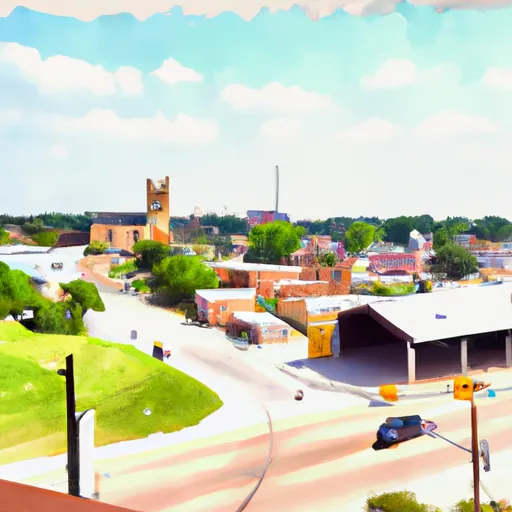°F
°F
mph
Windspeed
%
Humidity











Nazareth, Texas is a small rural town located in Castro County in the southern High Plains region. The town experiences a semi-arid climate characterized by hot summers and cool winters. Summers are typically dry with temperatures reaching the mid to high 90s Fahrenheit, while winters are cold with occasional snowfall and temperatures dropping below freezing.
Hydrologically, Nazareth lies within the Ogallala Aquifer region, which provides a vital water source for agricultural activities in the area. Groundwater is the primary source of water for the town and surrounding farms.
Despite its small size, Nazareth offers several outdoor recreation opportunities. The nearby Palo Duro Canyon State Park, located about an hour away, provides hiking, biking, and camping opportunities amidst stunning canyon formations. Additionally, the Alibates Flint Quarries National Monument, situated a few hours to the north, offers the chance to explore ancient Native American quarries and learn about their historical significance.
In conclusion, Nazareth, Texas features a semi-arid climate with hot summers and cool winters. The town relies on the Ogallala Aquifer for its hydrological needs. Outdoor enthusiasts can enjoy recreational activities at Palo Duro Canyon State Park and Alibates Flint Quarries National Monument.
Weather Forecast
Nazareth receives approximately 476mm of rain per year, with humidity levels near 69% and air temperatures averaging around 14°C. Nazareth has a plant hardyness factor of 7, meaning plants and agriculture in this region tend to thrive during the non-winter months.
Regional Streamflow Levels
2
Cubic Feet Per Second
45
Cubic Feet Per Second
10
Cubic Feet Per Second
23
Cubic Feet Per Second
Nearby Camping
| Camping Area | Reservations | Toilets | Showers |
|---|---|---|---|
| Waylon Jennings |



